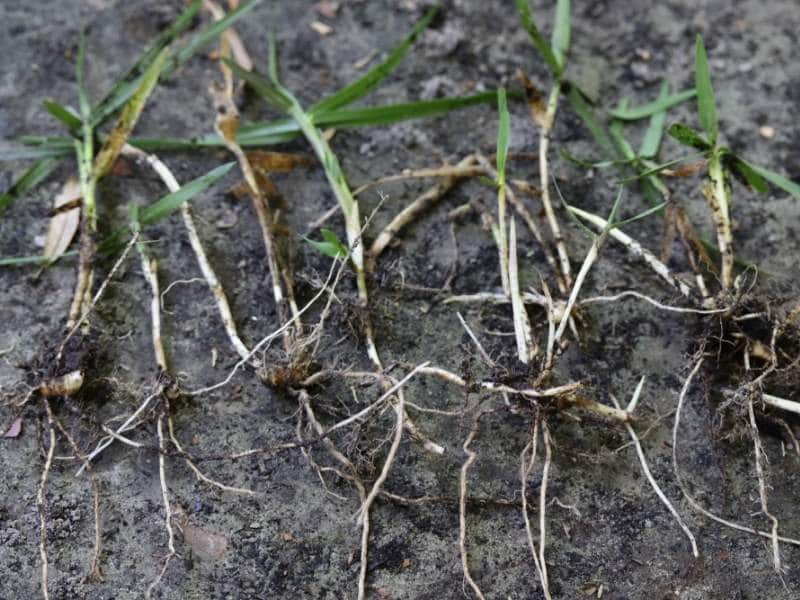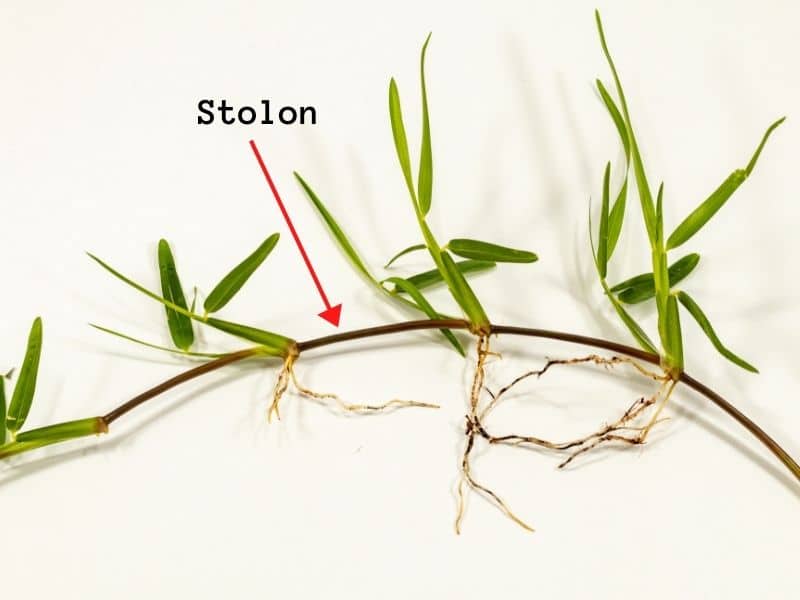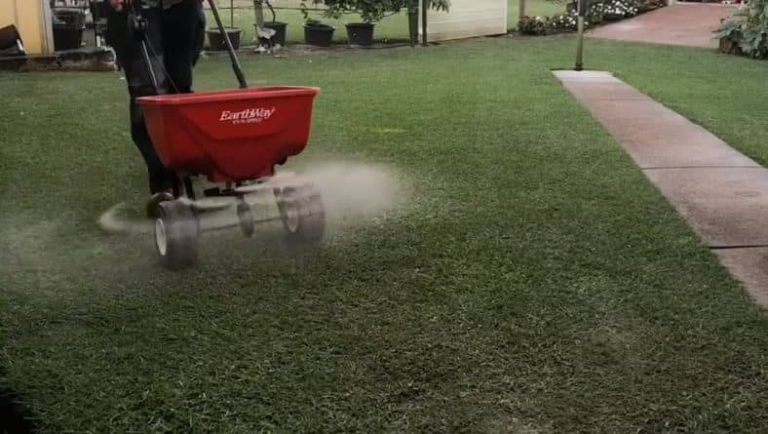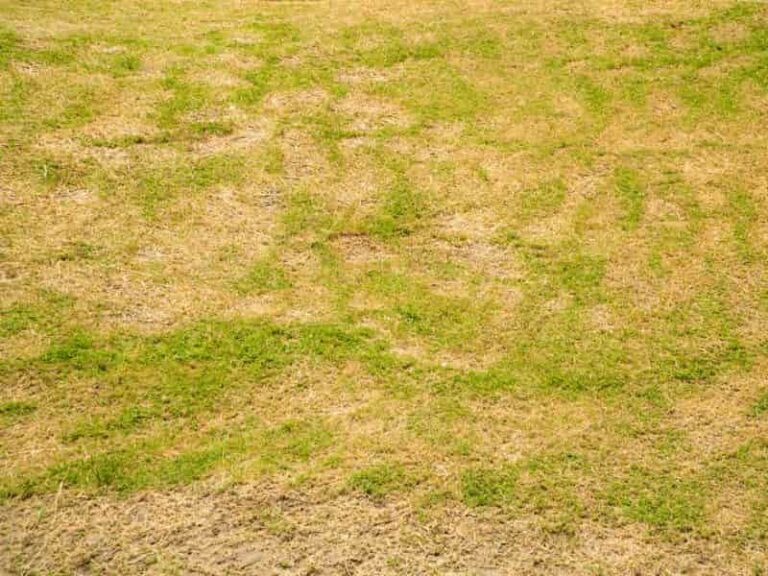What is Rhizome Grass and Stolon Grass? [With Examples]
Most turfgrass species spread by way of above-ground and underground stems known as stolons and rhizomes- hence the names stolon grass and rhizome grass. In this blog, we go into detail about these two types of grasses, including examples of each.
What is rhizome grass?

Rhizomes are underground creeping root stalks. Therefore, rhizome grasses spread by establishing their root systems underground, with new shoots sprouting from the new rhizomes under the right conditions of water and sunlight. A rhizome can be described as a modified stem that sprouts out of a grass plant at the point where the blade comes into contact with the ground.
Rhizomes first grow downwards into the ground before assuming lateral growth. The horizontal growth continues until growth conditions are perfect (water and sunlight), after which the rhizomes start growing vertically to form new shoots.
When selecting a rhizome grass for your lawn, there are two types to pick from: determinate rhizome grass and indeterminate rhizome grass.
- Determinate rhizome grasses are great for homeowners with compacted yard soil, as these grasses are capable of spreading even through such soil. These grasses spread via isolated patches and popular grass species that fall under this category include Kentucky bluegrass and red fescue.
- Indeterminate rhizome grasses are typically bound to spread over long distances since the rhizomes continue spreading horizontally and don’t stop unless they encounter an obstacle. This makes indeterminate rhizome grasses very invasive and difficult to control. Examples of grass species that fall under this category include Johnson grass, Quackgrass, and Bermuda grass.
- Grassy weeds that spread by way of rhizomes can be very difficult to control. You’ll need to use cultural practices for a long time or use systemic herbicide applications to be able to control rhizome weeds. See also Bermuda grass killers for more information.
What is stolon grass?

Stolon grasses are those turfgrass species that spread by way of above-ground root systems, as opposed to rhizome grasses that spread via underground shoots. Lateral offshoots sprout out of the stems of existing grass plants and begin spreading across the turf. Since stolons have nodes and internodes for rooting, roots finally develop, forming new grass plants upon coming into contact with the soil.
New offshoots/clone plants then develop from the new plants as well, as the process repeats over and over, making the grass spread fast. Most warm-season turfgrasses spread by way of stolons.
Here are grass types that spread by way of stolons:
- Centipede grass
- Bermuda grass
- St. Augustine grass
- Kentucky Bluegrass
Rhizome vs Stolon Grass – Differences
The main noticeable difference between rhizome and stolon grasses is where these lateral offshoots lie. Whereas rhizomes spread laterally below the ground surface as underground stems, stolons spread laterally above ground, typically running parallel to the ground or a few inches above it.
Another physical difference between rhizomes and stolons is the thickness, as stolons are a tad bit slender in appearance. Rhizomes, meanwhile, are fleshier and bulkier, comparatively speaking. Lengthwise- though- stolons tend to spread longer than rhizomes. Also, stolons typically have longer internodes compared to rhizomes.
In terms of their capacity to store nutrients, rhizomes have the advantage over stolons, due to their thick and fleshy nature. Finally, stolons are better for increased rates of vegetative expansion, in comparison to rhizomes. This is because they boast a faster growth rate and are longer than rhizomes, hence can spread at a faster rate.
How to control rhizome and stolon grasses
Being that grasses can spread rampantly via their stolons and rhizomes and spread beyond the lawn into areas where they’re not needed, it’s important to know how to curb the unwanted spread of rhizome and stolon grasses. The last thing you want is your invasive turfgrass creeping into your flower garden, driveway, or patio. That’s why we’ve detailed some of the most effective methods for controlling the spread of rhizome and stolon grasses in your lawn, below:
Installing a perimeter on the edge of your lawn
This will ensure that the turfgrass doesn’t spread beyond its boundaries into other areas like the driveway or the flowerbed. For this method to be effective, the materials used as perimeter edgings must be impenetrable to keep off slender stolons from growing through them.
They must also be dug deep enough into the ground to cut off underground rhizomes from passing through. An appropriate depth would be about 6-8 inches deep. The perimeter edgings should also stand at least a couple feet above ground to prevent stolons from creeping over them. As a precaution, avoid using biodegradable material like wood as perimeter edging, or even penetrable material like bricks.
Manual Weeding
While this method may be physically tiring and time-consuming, especially if there’s excessive unwanted growth in your backyard, it’s still one of the most effective and eco-friendly ways to curb the spread of grasses via rhizomes and stolons. By manually pulling out rhizomes from beneath the ground, you’ll be ensuring that no new growth occurs.
Reseeding with a bunchgrass
If you want to control the problem of invasive grass growth on your yard for good, you can use an herbicide to rid your lawn of the existing rhizome or stolon grass. Herbicides will seep into the soil and kill off underground rhizomes as well. You can then proceed to reseed your entire lawn with a bunchgrass species, since these don’t spread via stolons or rhizomes, thus eliminating the possibility of unwanted/ invasive growth in future.
However, before reseeding, you’ll want to replace your lawn soil with new, enriched garden soil. This is because the existing soil will most likely have been contaminated by the recent application of herbicides to kill off the previous turfgrass species. Popular bunchgrass species that you can opt for include tall fescue and perennial ryegrass.
Is Bermuda grass a rhizome or stolon grass?
Bermuda grass is considered to fall under both categories- it’s both a rhizome grass and a stolon grass. The presence of both above-ground and underground shoots in Bermuda grass encourages faster spread and growth of this turfgrass variety, but also makes it one of the most invasive ones as well.
References
- Oregon State University, Rhizomes and Stolons in Grass





A stolon is a ‘root’ that’s isn’t meant for water and nutrient absorption but for spreading the plant. Both Stolons and Rhizomes do this, but rhizomes spread IN the soil and stolons spread above the soil. In both situations, the root spreads laterally, then create a node where a new crown is formed and more grass blades grow.
Can you still find Bermuda stolons for purchase? Located in central Ca. Zipcode 93291. All gardeners using fescue sod but I have bare spots in the lawn due to gopher problem but is no more. Need stolons to fill these bare spots would start new lawn roots for Bermuda to regrow full bare spots.
Does anyone still sell stolons or can order online?
Need an answer about the purchase of Bermuda stolons!! Need Help!!!